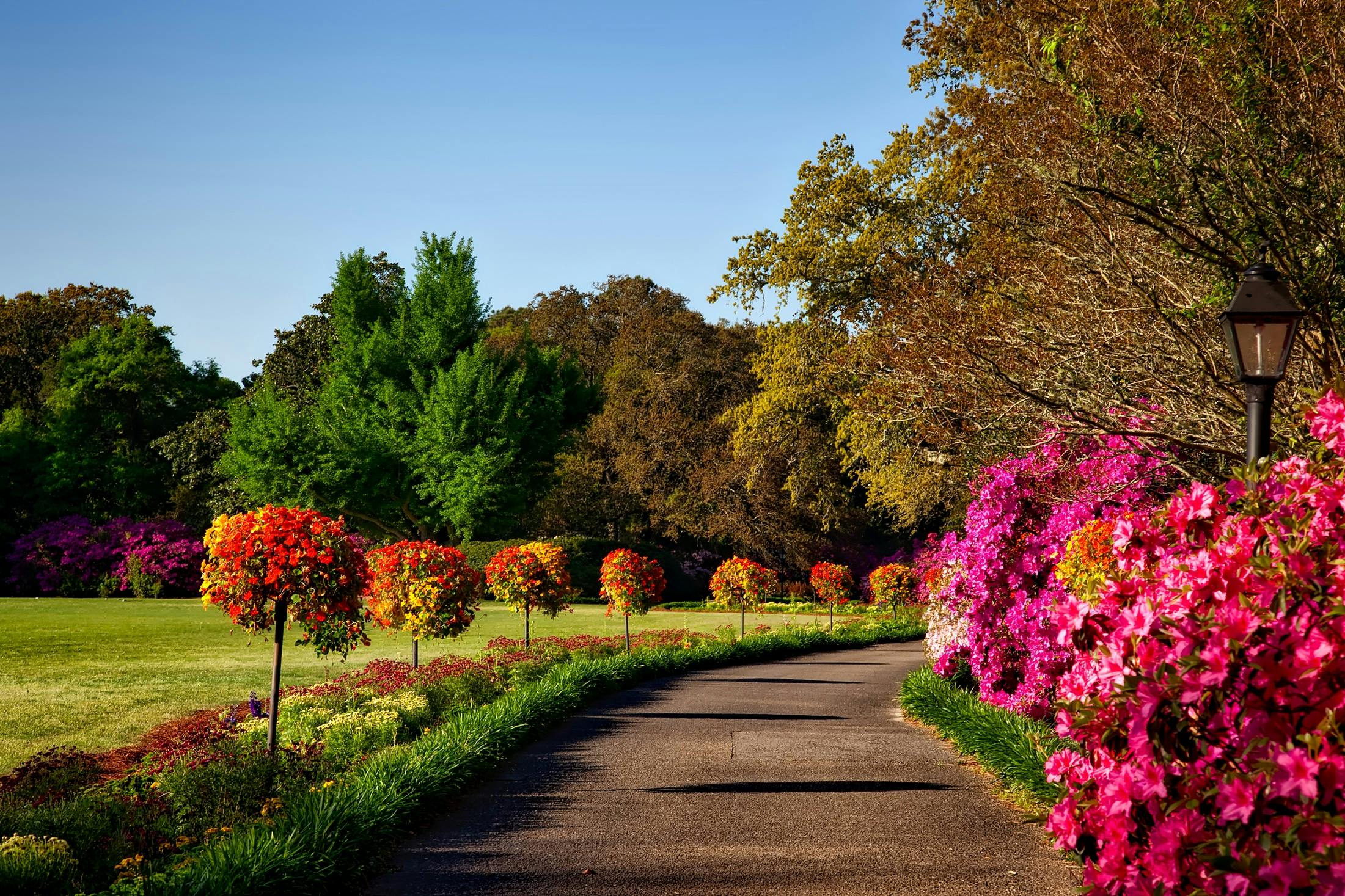What are the ideal months to visit the Royal Botanic Gardens, Kew, for flower blooms?

The Royal Botanic Gardens, Kew, is a prodigious garden and house located in Richmond, London. It's a site brimming with a remarkable array of plants from around the world, which makes it a green paradise for garden enthusiasts. But, when is the best time to visit Kew Gardens for the breathtaking sight of flower blooms? Though the gardens remain a sight to behold throughout the year, the ideal months for flower blooms are from late spring to early summer.
Spring: A Time of Blossoming Beauty
Spring is often associated with a season of rebirth and renewal in the plant kingdom. From mid-March to May, Kew Gardens transforms into a vibrant canvas of blooming flowers. During this time, you can expect to see an explosion of colour as a diverse range of plants and trees welcome the warmer weather with their dazzling display of flowers.
A lire également : How can you explore Manchester’s industrial heritage on a limited budget?
At the onset of spring, the first blooms to greet visitors are typically daffodils, crocuses, and the delicate blossoms of cherry trees. As spring progresses, the Rhododendron Dell comes alive with vibrant rhododendrons and azaleas. The Palm House also begins to fill with the sweet scent of tropical blooms.
The Great Broad Walk Borders and the Royal Kitchen Garden
From late spring to early summer, the Great Broad Walk Borders, which is Europe’s longest double herbaceous borders, becomes a sight to behold. This section of Kew Gardens is a tapestry of over 30,000 plants, which provide a riot of colour and texture that stretches for almost a kilometre.
Lire également : Where can you go wild pony spotting in the UK?
Adjacent to the Great Broad Walk is the Royal Kitchen Garden. Here, you can see a wide variety of fruit and vegetable plants, including rare and historic varieties. These gardens are a testament to Kew's commitment to preserving plant diversity and its work in providing sustainable solutions to global challenges.
The Iconic Palm House and Princess of Wales Conservatory
Two iconic glass structures that house an impressive variety of tropical and arid plants, the Palm House and the Princess of Wales Conservatory, are also a must-visit during this time of year. The Palm House, a Victorian masterpiece, is the world's most important surviving glass and iron structure. It houses a vast range of tropical plants, including a 16.5-metre high palm.
The Princess of Wales Conservatory, named after Princess Augusta, the founder of Kew, is Kew’s most complex glasshouse. During the year, ten different climatic zones are recreated, allowing for a diverse range of plants from around the world to thrive.
The Exotic Garden and the Temperate House
As summer begins, you would not want to miss visiting the Exotic Garden, located near the Victoria Gate. This sun-drenched garden is filled with a diverse range of plants from South Africa, the Mediterranean, and New Zealand. During June, the Exotic Garden becomes a sea of vibrant colours, as countless exotic plants burst into bloom.
The Temperate House, the world's largest surviving Victorian glass structure, is another highlight during this period. It houses an awe-inspiring collection of temperate zone plants, including some of the world's rarest and most endangered species.
The Best Time Depends on Your Plant Preference
Your ideal visit time ultimately depends on your interest in specific types of plants. For example, if you want to see the bluebell woods in full bloom, you should plan a visit in late April or early May. But, if your interest lies in viewing the summer lilies, the best time would be around mid to late August.
Visiting the Royal Botanic Gardens, Kew, is a memorable experience, regardless of the time of year. However, if you're seeking to witness the gardens in their full blooming glory, planning your visit from mid-spring to early summer will make for an unforgettable visit.
Remember, your visit to Kew isn't just about viewing beautiful plants and flowers. It's about immersing yourself in a world of rich botanical history, learning about plant conservation efforts, and most importantly, appreciating the profound beauty and complexity of our natural world. Whether you are a botany enthusiast or a casual visitor, Kew Gardens is a world of enchantment that waits to be explored.
Discovering Extra Features of Kew: RBG Kew and Marianne North Gallery
In addition to the colourful blooms, RBG Kew and Marianne North Gallery offer additional reasons to plan a visit to Kew. As spring transitions to summer, these attractions provide a different kind of allure.
The Royal Botanic Gardens Kew, or RBG Kew, is the scientific heart of the gardens. It hosts one of the largest and most diverse collections of seeds and plant specimens in the world, revealing the incredible biodiversity on our planet. During your visit, take a moment to explore the Herbarium, which houses over seven million preserved plant specimens. Or immerse yourself in the spirit of scientific discovery at the Millennium Seed Bank, where scientists work tirelessly to conserve seeds of UK native species and threatened plants worldwide.
Just a stone's throw away from the Palm House, you'll find the Marianne North Gallery. This quaint building is home to the stunning botanical artwork of Marianne North. A keen traveller and artist, North traversed the globe in the late 19th century, documenting the world's flora with her paintbrush. Her gallery at Kew is the only permanent solo exhibition by a female artist in Britain. During your visit, take a moment to appreciate her vivid depictions of plants from around the world. It's a unique opportunity to travel the world through the eyes of a pioneering botanist.
Architectural Marvels at Kew: Kew Palace, Queen Charlotte's Cottage, and Treetop Walkway
While every corner of Kew Gardens is a treat, some structures definitely deserve special attention. Kew Palace, Queen Charlotte's Cottage, and the Treetop Walkway are not only architectural marvels but also hold historical significance.
Kew Palace, also known as the Dutch House, is the smallest of the British royal palaces. It was used by George III and Queen Charlotte as a family retreat. Today, the palace is open to the public, allowing visitors to explore the royal residences and learn about the history of the British monarchy.
Near the Elizabeth Gate, nestled in a quiet corner of the gardens, is Queen Charlotte's Cottage. This charming 18th-century rustic retreat was used by the royal family for rest during long walks in the gardens. Today, it is well preserved and gives visitors a glimpse into the royal family's leisurely lifestyle.
For those not afraid of heights, the Treetop Walkway is a must-visit. It takes visitors 18 metres high into the canopy of Kew's arboretum, offering panoramic views of the gardens and the London skyline. Accessible by both stairs and lift, the walkway is a thrilling experience that provides a unique perspective on the gardens.
Conclusion: An Unforgettable Visit to the Royal Botanic Gardens, Kew
Visiting the Royal Botanic Gardens, Kew, is a journey through a world of botanical wonders. From the vibrant blooms of spring to the rich hues of summer, every season brings a fresh canvas of colours and experiences. The gardens' historical sites such as Kew Palace, the Marianne North Gallery, and the iconic glass structures like the Palm House and Temperate House, add to the charm of your visit.
You can also enrich your visit by exploring the RBG Kew, where you witness the extensive work done in plant conservation. Be sure to spend some time in the Great Broad Walk Borders and the Exotic Garden, taking in the beauty of the diverse range of plants.
Remember, the best time to visit Kew depends on your plant preferences. However, from mid-spring to early summer, the gardens are in full bloom, offering an unforgettable spectacle.
So whether you are a plant enthusiast or just someone who appreciates nature's beauty, a visit to the Royal Botanic Gardens, Kew, is a must. It's not just a visit to a garden, but a step into a different world that allows you to appreciate the diverse and intricate botanical life that our planet harbours.
